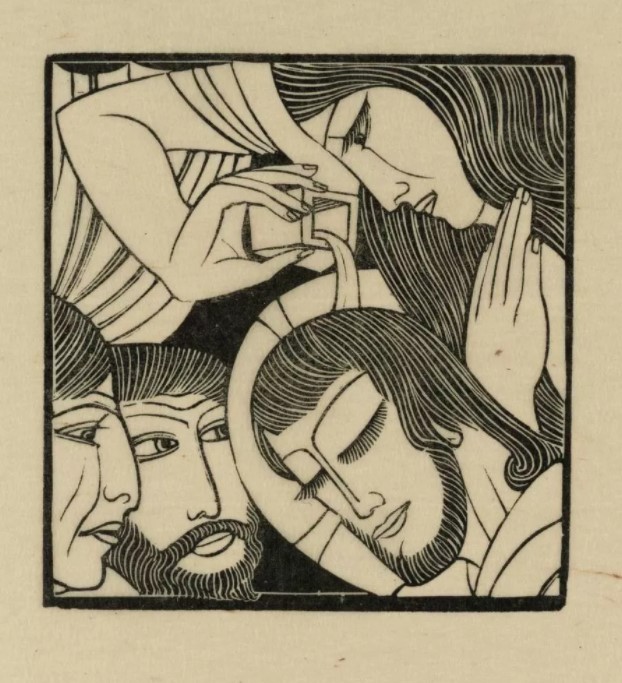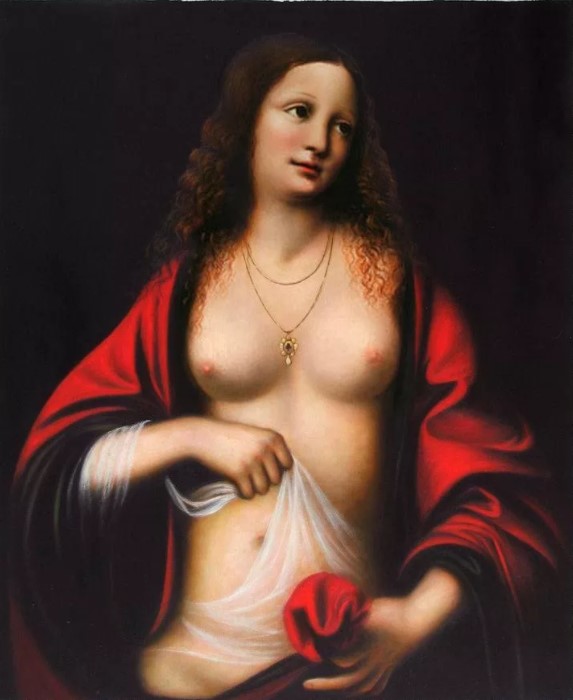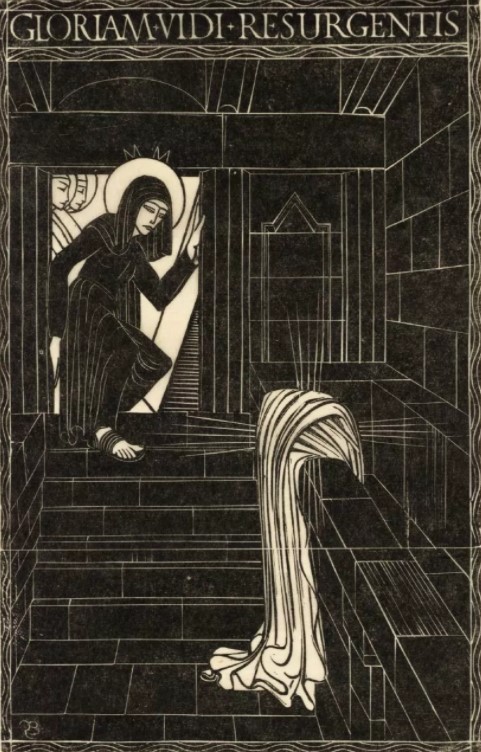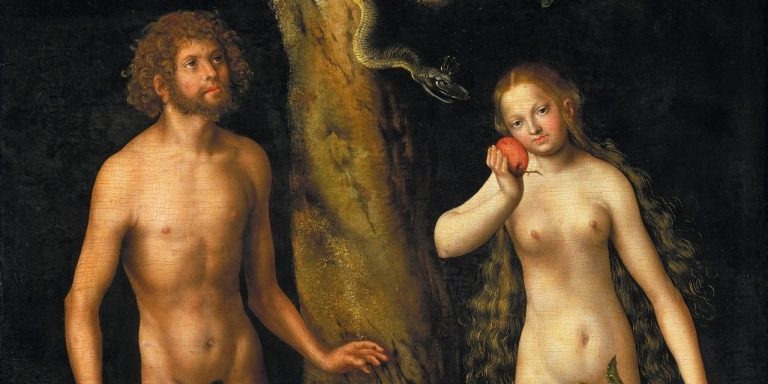What you still didn’t know about Mary Magdalene and her relationship with Jesus
Maybe now we will have more answers about this woman, since in the month of March the big screen and the bookstores will win two unusual productions that review the life of Mary Magdalene.
The film Maria Magdalena, with a script by Helen Edmundson and Philippa Goslett, follows the trajectory of the historical personality, played by Rooney Mara, who fights against the destiny given to the women of that time. It is the arrival of Jesus, lived by Joaquin Phoenix, that brings him hopes of change.
In addition to the work of fiction inspired by historical facts, that same month Zahar publishes the biography Maria Magdalena – Da Bíblia ao Código da Vinci: Companion of Jesus, Goddess, Prostitute, Feminist Icon, written by historian Michael Haag.
The author goes through various moments in the history of the messiah and analyzes the relationship he has built with Mary Magdalene, as well as studying the ways she has been interpreted by different religious currents and at different historical moments, deconstructing myths and prejudices.
Based on other historians, archaeological research and what is in the Bible, Haag summarizes, in 315 pages, everything you need to know about Mary Magdalene.
We separate some of these curiosities below:
Sinner?
It is very likely that you know Mary Magdalene as a prostitute or a sinful woman, not least because that is how she was portrayed by the Catholic Church between the years 591 to 1969. This was a choice made by Father Gregory I, who used the following biblical passage to speak of her:
“And behold, a woman of the city, who was a sinner, when she heard that he was at the table in the Pharisee’s house, brought an alabaster vessel with balm, and stood at his feet behind him, weeping, and began to cast her feet with tears, and wiped them with the hair of his head, and kissed his feet, and anointed them with ointment. And he said to her, ‘Your sins are forgiven'”.
All this time, Mary Magdalene was this woman for the Church – and also for the artistic reproductions of the biblical narrative, such as in the films The Last Temptation of Christ (1988) and The Passion of Christ (2004), in which she is depicted as an adulteress.
Holy?
In spite of this negative clothing, Mary Magdalene was not seen as a sinner by all. In some other Christian religious aspects, the woman would be the wife of Jesus and even the mother of his son. The Cathars, who lived in the south of France during the Middle Ages, were the ones who nourished this thought.
This hypothesis was the backdrop to the writer Dan Brown’s book The Da Vinci Code, in which he recounts a secret relationship between Jesus and Mary Magdalene secretly portrayed in works by the Renaissance artist Leonardo da Vinci.
This theory gained further strength in 2012 when historian Karen King, a professor at Harvard University in the United States, found a parchment with inscriptions in Coptic, an ancient language spoken in Egypt, which had inscriptions indicating that Jesus would have a wife. After going to the public and causing fury, however, the researcher was confronted with the allegation that the content was falsified.
The Magdalene
The formation of this woman’s name is somewhat controversial. In the original Greek of the Gospels, she is never ‘Mary Magdalene’. In fact, she is described as ‘Mary, called Magdalene’, or ‘Mary the Magdalene’, as if the second name were given to her as a title.
The assumption that many researchers make is that this title refers to her origin, although this information does not appear in the New Testament. The assumption is that she is Mary of Magdala, a village often described by travellers as an unhealthy, miserable and poor place.
The village of Magdala (Mejdal, in Arabic), was situated where Iraq is today, northwest of the marges of the Sea of Galilee. The space exists to this day and it must be said that it still has the same difficult conditions as before.
However, even precarious, it is possible that Magdala was a city that flourished and prospered during the time of Jesus. Expeditions and archaeological research that are taking place there today give evidence of this.
Today it is believed that Magdala was a Hellenistic city, founded in 2 B.C. by an independent Jewish dynasty called Hasmoneus.
Beside Jesus
There may even be disagreements about whether or not Mary Magdalene was the wife of Jesus, but it is unanimous that she was at least a great companion of the prophet. As Haag reports in his work, the woman was with Jesus in Galilee as he proclaimed the kingdom of God to his disciples.
She also accompanied him when he and his disciples journeyed to Jerusalem and entered the holy city; and even when the Romans nailed Jesus’ body to the cross.
Mary Magdalene also accompanied the transport of the body to the tomb and it was she who saw on the third day that the tomb was empty. According to Christian tradition, it was Mary Magdalene who witnessed the resurrection and received the first appearance of Jesus.
Despite all this importance, she is mentioned by her name only 14 times in the Bible.
“As a woman and companion of Jesus, she is the only person close to him at the critical moments that define his purpose, that describe his destiny and that will give rise to a new religion; she helps to support Jesus in his works, she is totally fearless and is a woman of vision. Her character holds the secret of her name. In the beginning there is Jesus and Mary, called Magdalene”, Haag writes.
The cure of the sick
The first time Mary Magdalene is quoted in the biblical scriptures is when Jesus is undertaking his journey through Galilee and some women come to him for healing. One of them is Mary Magdalene, from whom seven demons come out, as the disciple Luke writes.
It is because of these ‘seven demons’ that come out of themselves that Mary Magdalene became associated as an unclean and tormented woman. However, as Haag explains, this term ‘demon’ is used throughout the biblical scripture to narrate episodes in which Jesus treats the sick. The demons came out and the person was healthy again.

Participation of women
After being treated, Mary Magdalene decides to accompany Jesus and his apostles by helping them with the care and nourishment necessary to continue the journey. She was also joined by other women, such as Joanna, Susanna and other women, as Luke describes in his Gospel.
In joining the group, Mary Magdalene is quoted in a few episodes, but even if they are short and brief, they bring tips that indicate a little about her life, her character and her relationship with Jesus.
An example of this is the episode during Easter week, in which Jesus and his disciples are in lodgings in Bethany and a woman enters with an alabaster and ointment vase of great value and pours it over the head of the messiah. Several Gospels describe the situation, but they never mention the name of the mysterious woman, who is Mary Magdalene.
Another case is during the Last Supper, when Jesus and his apostles are holding the final banquet. According to Haarg, there is no reason not to believe that the women who were undertaking the journey to the kingdom of God were not there as well.
Ahead of time
As mentioned earlier, Mary Magdalene and other women accompanied Jesus and his disciples along their journeys through Galilee.
However, for Mary Magdalene and these other female characters to undertake the journey towards the creation of the kingdom of God, they would have to be radical and circumvent the rules established for women during that time, for there were no conditions for them to participate in that movement unless they could live independently of their family ties.
“The restrictions on Jewish women in Palestine were quite severe at the time of Mary Magdalene, when Judaism was most fiercely engaged in the struggle to preserve their identity against the influences of Hellenistic culture […]. The Jewish women of Judea and Galilee were subject to ever stricter interpretations of the Torah and even more elaborate rules,” Haag describes.
Palestinian society during the first century was one of the most patriarchal and conservative of all, so it was very difficult for a woman to lead an independent life.
For the most part, Jewish women were restricted to domestic chores and were legally owned by men: by their fathers while not married, then by their husbands. They were not allowed to receive an education and if they needed some income to supplement the household resources, they had to perform domestic activities.
The explanation of the first-century Judeo-Roman historian Josepho says it very well: “The woman, says the law, is in all things and inferior to man. Let her therefore be submissive, not for her humiliation, but that she may be directed; for authority has been given by God to man”.
Thus, one of the only ways likely for a woman to be financially independent at that time would be divorce (on the part of the man) or widowhood, especially if the woman belonged to an upper-class family.
In view of this, so that Mary Magdalene and these other women would participate in this movement, they were financially and socially independent. Haag also adds and says that it was they who supported the journey of Jesus and the disciples with their own financial resources. It was they who provided the group’s food, clothing, and whatever was necessary for the maintenance of the trips.
To make this possible, many historians believe that Mary Magdalene comes from a wealthy family.

Mary Magdalene’s wedding?
It was at a wedding feast at Cana in Galilee where Jesus performed his first miracle: he turned water into wine.
It is not mentioned in the scriptures who is the couple who were making communion, but some biblical commentators, historians and the theologian St. Jerome of the 9th century believe that the wedding is of Mary Magdalene and John the Evangelist, the author of the fourth Gospel. According to contact in the scriptures, John the Evangelist is known to have abandoned his bride to join Jesus and announce the kingdom of God, becoming one of the 12 disciples of the Messiah.
But there is also evidence in John’s Gospel that the marriage was Jesus’ own with Mary Magdalene.
According to Haag, it would not be unusual to imagine Jesus being married, not least because it was difficult for a man of his age not to have a companion at that time.
“Jesus was relaxed about ritual ablutions and diet; […] he enjoyed food, drink and good conversation; he was witty and sharp; he felt at ease with women and self-deprecating; but he had an intensity and aura that made him very attractive. If Jesus and Mary Magdalene were married, this would explain their intimacy, their constant company, their presence at the crucifixion and, above all, their visit to the tomb on the third day carrying spices to anoint his naked body, a task taken on by a wife,” Haag writes.
After the resurrection
One of the most emblematic episodes, indicating a close relationship between Mary Magdalene and Jesus, takes place after the crucifixion.
After witnessing the act, it is Mary Magdalene who goes to visit the tomb three days after the episode.
Her return to the tomb of Jesus is part of an ancient Jewish tradition of checking whether the dead were really dead. However, besides doing so, her other purpose of the visit was to anoint the body of Jesus.
“On the third day she went to the tomb to anoint the body of a naked man, something that no woman could do unless she was a very close relative. Jesus had a mother, he had sisters, he had other relatives, any of whom could have performed these family duties. Yet it was Mary Magdalene who went to the tomb on the third day,” writes the historian.

Immediately after going to the tomb of Jesus and not finding his body, Mary Magdalene comes across a gardener who is in fact Jesus reincarnated. This is the last time that she appears in the biblical narratives and it is the last time that we hear about Mary Magdalene. She no longer appears in the Bible, in Paul’s epistles and in the Book of Acts of the Apostles
Other signs of Mary Magdalene’s life and whereabouts can be found only in later Gospels.
Official version
In 591 A.D., Father Gregory pronounced in the Basilica of Saint Clement in Rome the identity that Mary Magdalene would assume in the vision of the Church and that would endure for a long time: that of a prostitute, a sinful woman, a submissive and full of repentance. She would be the opposite of Jesus’ mother, Mary, a virgin and pure.
Yet for Gnostic currents, Mary Magdalene was portrayed as a visionary woman and heir of light. In some of the Gnostic gospels, she assumes a leading role before the other apostles; she is the disciple whom Jesus loves most, the only one who understands the true nature and teachings of the master.
In particular for the Cathar Gnostics, Mary Magdalene was a sinful figure, but she is forgiven by Jesus and adored by him. This is described in the manuscript The Golden Legend, written in 1275 by Bishop Jacobus de Voragine of Genoa.
Voragine describes her exactly as what was established by Pope Gregory: she is a sinner, and her life is based on guilt and repentance. But he is based on another tradition. Mary Magdalene of Voragine was of noble origin and her parents were descendants of kings, so that the woman would be heir to a considerable part of Jerusalem. But Mary Magdalene gave herself “totally to the pleasures of the flesh” and her name was forgotten and called ‘the sinner’. But this changes after meeting Jesus.
“What Voragine says is that after Mary Magdalene threw herself at the feet of Jesus in the house of Simon the Pharisee, and after he forgave her sins and cast out the seven demons from her, Jesus inflamed her with love for him. She traveled by his side and took care of his needs at all times. She stood beside him at the foot of the cross, and in his resurrection he appeared to her and made her the “apostle of the apostles”, writes the historian Haag.
In this French Christian tradition, after the crucifixion of Jesus, Mary Magdalene sailed to Marseille, where she convinced the governor of the province to destroy pagan temples and build churches.
However, for the Vatican, Mary Magdalene was portrayed as a sinner until 1969, when the Roman Catholic Church ceased to recognize her as an unclean woman and decreed that she would be venerated as a disciple. However, without any apologies or assurances of the historical prominence she deserved.


